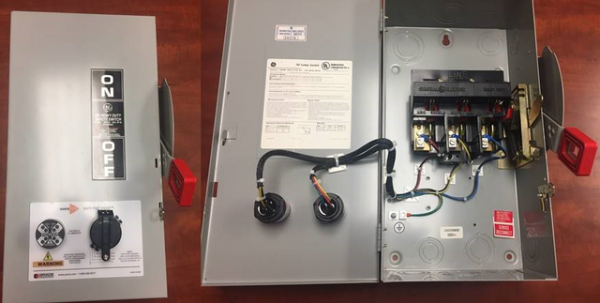Voltage Testing is Hazardous! But it doesn’t have to be.
February 19, 2019Six steps are required to create an electrically safe work condition:
- Identify all sources of electric power.
- Properly open/disconnect all sources of power.
- Where possible verify visually that the disconnecting means are open.
- Apply lockout and tagout.
- Test for the absence of voltage.
- Apply grounds as applicable.
 In my experience, the single most important step is also the single biggest headache. It’s the one that tempts even the most safety focused electrical technician and electrician to take a shortcut. The step that I’m referring to is Step 5: Test for the absence of voltage. The one step where if everything else has gone wrong (missed a source, opened the wrong breaker, not all poles of the switch opened), the qualified worker can prevent an electrical accident.
In my experience, the single most important step is also the single biggest headache. It’s the one that tempts even the most safety focused electrical technician and electrician to take a shortcut. The step that I’m referring to is Step 5: Test for the absence of voltage. The one step where if everything else has gone wrong (missed a source, opened the wrong breaker, not all poles of the switch opened), the qualified worker can prevent an electrical accident.
While this step is extremely important it requires more equipment than any of the other steps. It’s also the one that most readily exposes the qualified worker to an arc flash hazard. This is particularly true in industrial environments, at 480 Volts and below, where grounding is not compulsory. It’s this voltage level where the vast majority of technicians and electricians perform their work and consequently where most of the accidents occur.
Let’s acknowledge that testing for the absence of voltage is a critical step, potentially hazardous, has inherent risk, and requires PPE. Then we should use the hierarchy of controls to mitigate this hazard. The easiest way to mitigate this hazard is to re-design voltage testing. Make it inherently safe by allowing the qualified worker to test for the absence of voltage in a virtually zero hazard condition. This can be accomplished utilizing a Grace remote test port.
This test port after being connected to the system allows for voltage testing outside of the arc flash boundary and eliminates exposure to energized equipment. A qualified worker can make a test prior to de-energizing the equipment at the test port. Then after opening the source another test at the test port is made to determine that voltage is now absent. Using the combo unit there is also a visual indication of the presence of voltage.
If you would like to learn more check out our Spotlight on a VTS in action and please contact Mike Hughes at 615-828-8028 today. We look forward to hearing from you!
